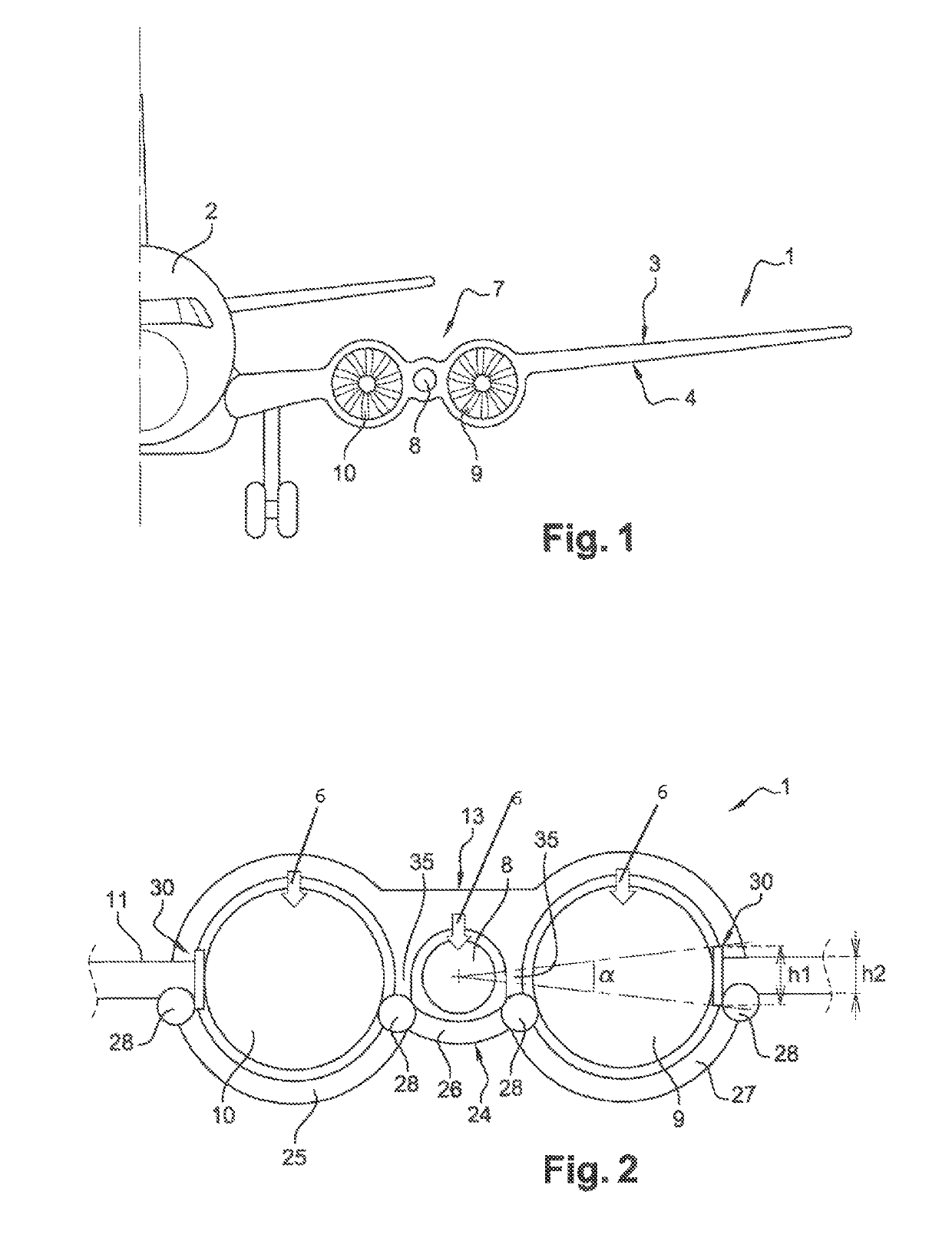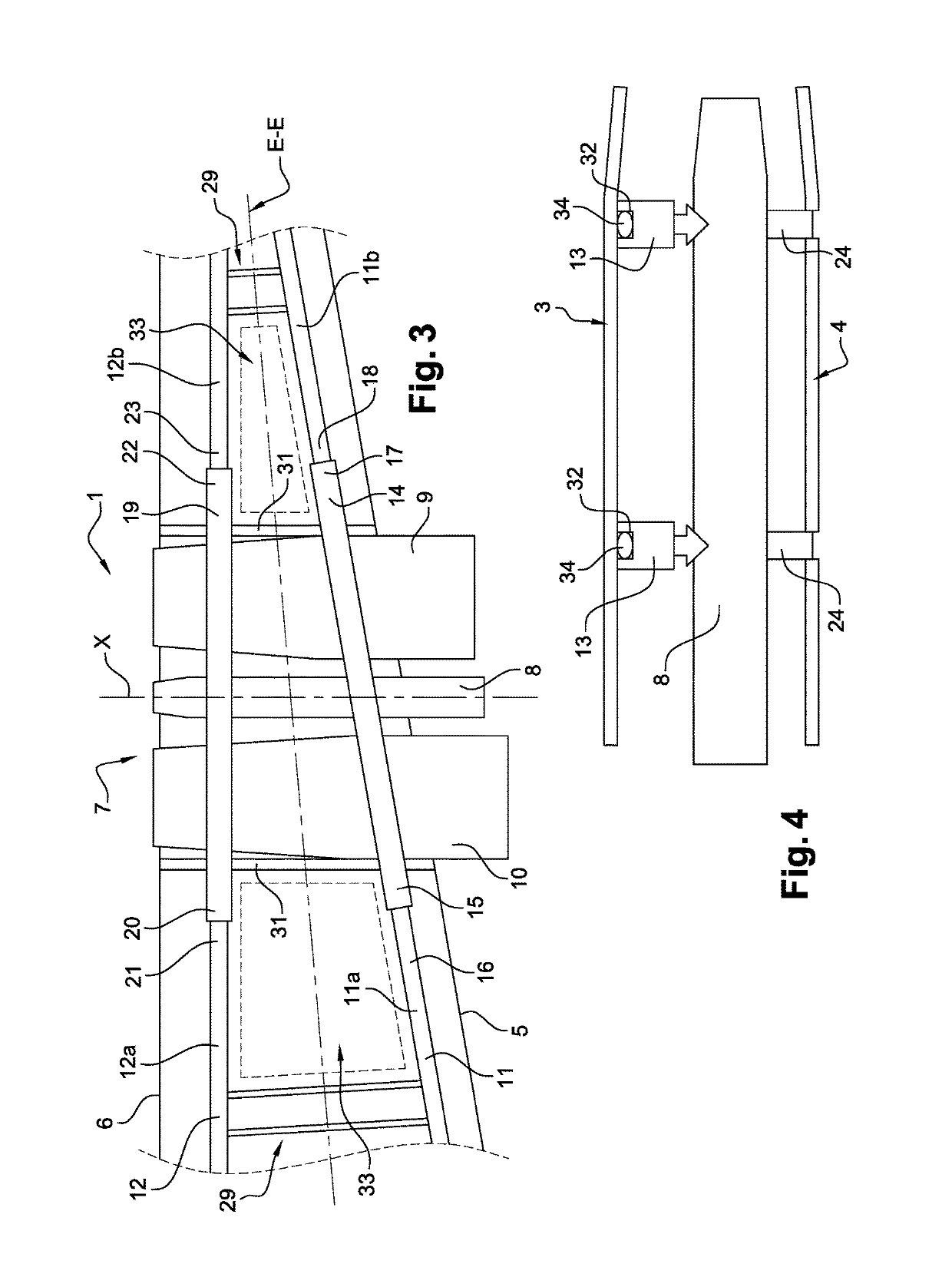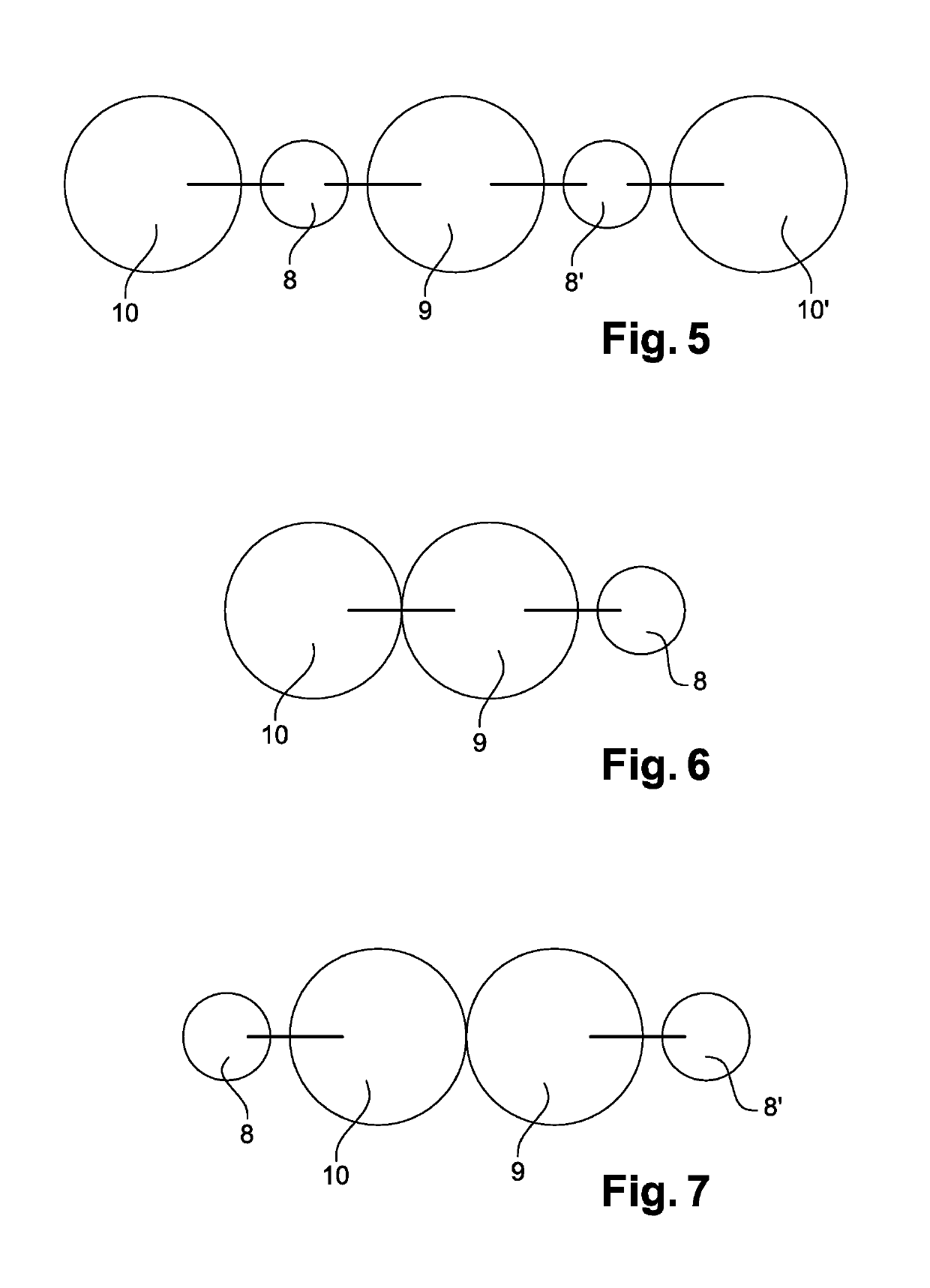Propulsive wing of an aircraft
a technology of propellers and wings, applied in the field of propellers, can solve the problems of deteriorating the performance of low-pressure turbines, increasing the bypass ratio, increasing load, etc., and achieves the effect of reducing aerodynamic drag, reducing weight and improving the bypass ratio of the propulsion assembly
- Summary
- Abstract
- Description
- Claims
- Application Information
AI Technical Summary
Benefits of technology
Problems solved by technology
Method used
Image
Examples
Embodiment Construction
[0011]This object is achieved according to the invention by a propulsive wing of an aircraft having at least two structural spars, upstream and downstream, that extend in a wing span direction of the wing, and a propulsion assembly comprising at least two fans each driven by at least one gas generator, at least one gas generator extending along an axis that is remote from the axis of rotation of at least one fan, and at least one of the spars comprising a first part and a second part that are separated by the propulsion assembly in the wing span direction of the wing, the first and second parts being interconnected by a rigid structure shaped so as to extend at least in part around said fans, the gas generator and the fans each being supported directly and individually by the rigid structure.
[0012]This solution thus makes it possible to achieve the object mentioned above. In particular, the wing separated by the propulsion assembly makes it possible to reduce the impact on the drag ...
PUM
 Login to View More
Login to View More Abstract
Description
Claims
Application Information
 Login to View More
Login to View More - R&D
- Intellectual Property
- Life Sciences
- Materials
- Tech Scout
- Unparalleled Data Quality
- Higher Quality Content
- 60% Fewer Hallucinations
Browse by: Latest US Patents, China's latest patents, Technical Efficacy Thesaurus, Application Domain, Technology Topic, Popular Technical Reports.
© 2025 PatSnap. All rights reserved.Legal|Privacy policy|Modern Slavery Act Transparency Statement|Sitemap|About US| Contact US: help@patsnap.com



